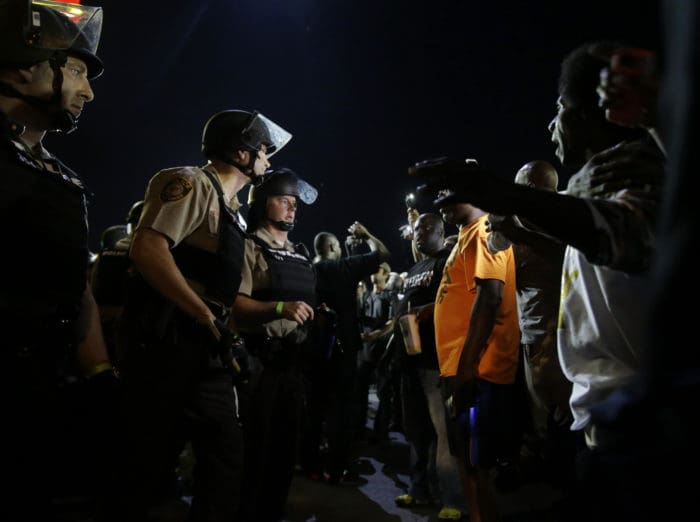A recently published analysis of police-involved shootings and race confirms something we’ve been saying for a long time. The facts don’t back up the narrative that cops are a bunch of racist thugs who love to shoot minorities for fun.
As we’ve written,
…calling cops white supremacists and slave patrols…does precisely nothing to improve the situation. If fact, to the extent that these charges cause officers to pull back from involvement and policing in minority majority areas (i.e., the Ferguson Effect) the people who will be most harmed will be blacks.
Now a study published in the Proceedings of the National Academy of Sciences bears that out. Just don’t expect these findings to get much press. They don’t inflame anyone or further the right narratives.
There is widespread concern about racial disparities in fatal officer-involved shootings and that these disparities reflect discrimination by White officers. Existing databases of fatal shootings lack information about officers, and past analytic approaches have made it difficult to assess the contributions of factors like crime.
We create a comprehensive database of officers involved in fatal shootings during 2015 and predict victim race from civilian, officer, and county characteristics.
We find no evidence of anti-Black or anti-Hispanic disparities across shootings, and White officers are not more likely to shoot minority civilians than non-White officers. Instead, race-specific crime strongly predicts civilian race. This suggests that increasing diversity among officers by itself is unlikely to reduce racial disparity in police shootings.
– , , , , and
Also . . .
Despite extensive attention to racial disparities in police shootings, two problems have hindered progress on this issue. First, databases of fatal officer-involved shootings (FOIS) lack details about officers, making it difficult to test whether racial disparities vary by officer characteristics.
Second, there are conflicting views on which benchmark should be used to determine racial disparities when the outcome is the rate at which members from racial groups are fatally shot.
We address these issues by creating a database of FOIS that includes detailed officer information. We test racial disparities using an approach that sidesteps the benchmark debate by directly predicting the race of civilians fatally shot rather than comparing the rate at which racial groups are shot to some benchmark.
We report three main findings: 1) As the proportion of Black or Hispanic officers in a FOIS increases, a person shot is more likely to be Black or Hispanic than White, a disparity explained by county demographics; 2) race-specific county-level violent crime strongly predicts the race of the civilian shot; and 3) although we find no overall evidence of anti-Black or anti-Hispanic disparities in fatal shootings, when focusing on different subtypes of shootings (e.g., unarmed shootings or “suicide by cop”), data are too uncertain to draw firm conclusions.
We highlight the need to enforce federal policies that record both officer and civilian information in FOIS.
